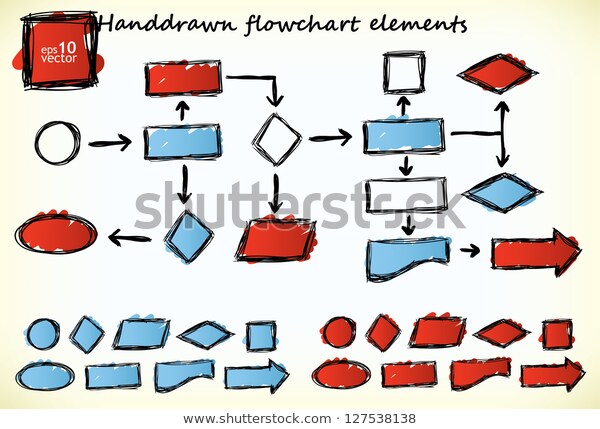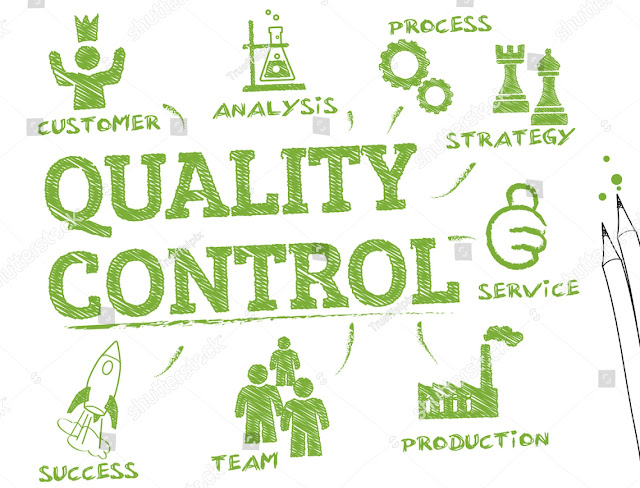Quality control
History:
20 वीं शताब्दी के शुरुआत से पहले manufacturer बड़े पैमाने पर उत्पादन के समय अपना फोकस quality की बजाए quantity पर देते थे। वो quantity को ज्यादा महत्व देते थे। उस समय के manufacturers को quality control का सही meaning नहीं पता चला था।वह क्वालिटी कंट्रोल को कम manpower cost का उपयोग करते हुए production बढ़ाने के लिए मशीनरी और टेक्नोलॉजी में सुधार का एक साधन समझते थे। quality की बजाय quantity पर ध्यान देने का यह दौर उनका ज्यादा दिन नहीं चला । अधिक quantity मे उत्पादन या mass production के समय products मे अधिक असमानता आने लगी थी। जिसके चलते customers भी असंतुष्ट रहते थे।लेकिन 20 के दशक तक demands और compitition बढ़ने के कारण मैन्यूफैक्चर का focus quantity से quality की ओर जाना स्वभाविक सा बन गया था, जो कि अनिवार्य भी था। उस समय manufacturers को कम में अधिक करने की आवश्यकता थी। customers की असंतुष्टि के चलते यह भी स्पष्ट हो चुका था कि मैन्युफैक्चरिंग में mass प्रोडक्शन के समय products और manufacturing processes का under क्वालिटी कंट्रोल होना अनिवार्य है।
Quality control न केवल consumers के लिए products की क्वालिटी को improve करने में मदद करता है बल्कि manufacturing processes और efficiency को भी improve करता है।
Quality control defective products बनने से पहले रोकने के लिए और manufacturing processes मे समस्याओं का पता लगाने और उन्हें ठीक करने के लिए पेश किया गया था। सन् 1920 में, Walter A. Shewhart ने process मैं गणेशन का पता लगाने के लिए एक control chart का निर्माण किया जिसमें process मे हो रहे variations को स्पष्ट देख सकते थे। उन्होंने यह प्रदर्शित किया कि manufacturing process मे variations से products मे variations आती है। उन्होंने कहा कि processes में variation को eliminate नही कर सकते लेकिन हम processes हो रहे variations कम तो कर सकते हैं इसलिए process मे हो रहे variation को कम करने पर जोर दिया गया।
इससे स्पष्ट दिखाई देता है कि qulity control ने पुनर्निर्माण की उन्नति में एक महत्वपूर्ण भूमिका निभाई है और इसका अस्तित्व आज भी industries के लिए महत्वपूर्ण है।
7QC tools which is used for problem solving in industry.
7 QC TOOLS
- Check sheet
- Histogram
- Scatter diagram
- Pareto diagram
- Cause and effect diagram
- Graph & Control chart
- Flow chart
1. Check sheet :-
It is a format used to collect data in real time at the location where the data is generated.
Purpose :-
- Tools for collecting & organizing measured & counted data
- Data collected can be used as input data for other quality tools
2. Histogram :-
Histogram is very important tool and used for understand the distribution of collected data.
Histogram की मदद से हम collected data के distribution को समझते हैं उसके बाद हमे आगे action लेने में आसानी रहती हैं।
Histogram की मदद से हम collected data के distribution को समझते हैं उसके बाद हमे आगे action लेने में आसानी रहती हैं।
3. Pareto diagram :-
Pareto diagram हमें problem का analysis करने के बाद priorities करने में help करता हैं।
It is a prioritization tool.
When to use Pareto :-
It is a prioritization tool.
When to use Pareto :-
- Prioritising problem
- Analyzing symptoms
- Proving effectiveness of remedy
4. Scatter diagram :-
To identify the correlation between two variables.
It shows the graphical representation of relationship.
5. Cause and effect diagram :-
It is also known as Isikawa diagram.
Fishbone diagram is a tool to identify potential cause, root cause to identified after validation.
Purpose :-
Graphical representation of potential causes of a problem.
Benefits :-
- यह potential causes को identify करने में मदद करता है।
- Brainstorming relationship को establish करता हैं।
- Problem के causing factor को समझने में मदद करता है।
6. Flow chart :-
Visual illustration of the sequence of operations required to complete a task.
यह हमे किसी process के sequence को समझने मे help करता हैं। यह एक schematic drawing होती है जिसमे हम Process को step by step समझते कि process हमारा कैसे Flow करेगा।
Benefits :-
- यह हमे process improvement की opportunity को identify करने में मदद करता है।
- Process को समझने मे help करता है और अगर process मे कोई non value added activity है तो हम उसको भी identify करके improve कर सकते हैं।
7. Control chart :-
A control chart is a line graph used to display variation on time order interval.
(Control chart एक line graph होता है जिसका Use हम एक interval of time मे process के variation को देखने मे करते हैं।)
A centre line and control limits are placed on graph to help analyzing the pattern of data.
Purpose :-
- Control chart indicates whether a process is in control or not.
- It ensures product quality level
- To identify the dynamic or special causes of variation in a repeating process
Quality control
Definition :
The activities focus on identifying defect in the actual products produced. Quality control is a set of activities for ensuring quality in products.
(Quality control वह किर्या है जिसमें किसी product के उत्पादन मे defect को identify करने पर ध्यान देते है!)
OR
It is the process of inspecting products to ensure that they meet the required quality standard.
(यह उत्पादो को परखने की पृकिर्या है कि वे required quality standard को पुरा करेंगे! )
(Quality control वह किर्या है जिसमें किसी product के उत्पादन मे defect को identify करने पर ध्यान देते है!)
OR
It is the process of inspecting products to ensure that they meet the required quality standard.
(यह उत्पादो को परखने की पृकिर्या है कि वे required quality standard को पुरा करेंगे! )
According to ISO 9000 -
ISO 9000 defines the quality control as a part of quality management focused on fulfilling quality requirement.
(ISO 9000 क्वालिटी कन्टृोल को quality management के एक हिस्से के रुप मे define करता है जो किसी product के लिए दी गई requirement को पुरा करता है! )
Companies that engage in quality control typically have a team of workers who focus on testing a certain member of products or observing services being done. The products that are examined usually are choosen at randomly. The goal of the team is to identify products that do not meet a company's specified standards of quality.
(वें कंपनिया जो quality control से सम्बंधित है , उनमे
workers की एक टीम जो उत्पादन से निकल रहे उत्पाद की testing पर ध्यान देती हैैै! Product को बिना किसी sequence/serial के चुनकर check करते है! टिम का उध्देश्य उन उत्पादो को पहचानना है जो क्वालिटी के लिए company के specified standard को पुरा नही करेंगें! )
If a problem is caught or identified, the job of a quality control team and professinal might involve stopping production untill the problem has been solved.
(अगर कोई major defect/problem पकड़ा जाए तब quality control team अौर professionals उत्पादन को रुकवा सकते है जब तक problem solve ना हो जाए! )
After that other individuals are discover the causes of problem and fixing them.
After the problem solving and the problems are overcome and the target of problem solving has been achieved, the products continues under production or implementation as usual.
Many types of companies perform these type of quality checks.
(उसके बाद दुसरे individuals problem के cause को discover करते है और उसे ठिक करते है!
समस्या के solve होने के बाद और problem के आने से बंद होने के बाद products के उत्पादन को जारी कर दिया जाता है! )
We hope you will understand this topic.
👍
(ISO 9000 क्वालिटी कन्टृोल को quality management के एक हिस्से के रुप मे define करता है जो किसी product के लिए दी गई requirement को पुरा करता है! )
Companies that engage in quality control typically have a team of workers who focus on testing a certain member of products or observing services being done. The products that are examined usually are choosen at randomly. The goal of the team is to identify products that do not meet a company's specified standards of quality.
(वें कंपनिया जो quality control से सम्बंधित है , उनमे
workers की एक टीम जो उत्पादन से निकल रहे उत्पाद की testing पर ध्यान देती हैैै! Product को बिना किसी sequence/serial के चुनकर check करते है! टिम का उध्देश्य उन उत्पादो को पहचानना है जो क्वालिटी के लिए company के specified standard को पुरा नही करेंगें! )
If a problem is caught or identified, the job of a quality control team and professinal might involve stopping production untill the problem has been solved.
(अगर कोई major defect/problem पकड़ा जाए तब quality control team अौर professionals उत्पादन को रुकवा सकते है जब तक problem solve ना हो जाए! )
After that other individuals are discover the causes of problem and fixing them.
After the problem solving and the problems are overcome and the target of problem solving has been achieved, the products continues under production or implementation as usual.
Many types of companies perform these type of quality checks.
(उसके बाद दुसरे individuals problem के cause को discover करते है और उसे ठिक करते है!
समस्या के solve होने के बाद और problem के आने से बंद होने के बाद products के उत्पादन को जारी कर दिया जाता है! )
We hope you will understand this topic.
👍
Thank you😊Some of related question that help to improve your basic knowledge.
- Meanings of Quality?
- Origin points of quality circle in Japan
- TQM
- what is quality assurance ?
- what is quality control?












No comments:
Post a Comment